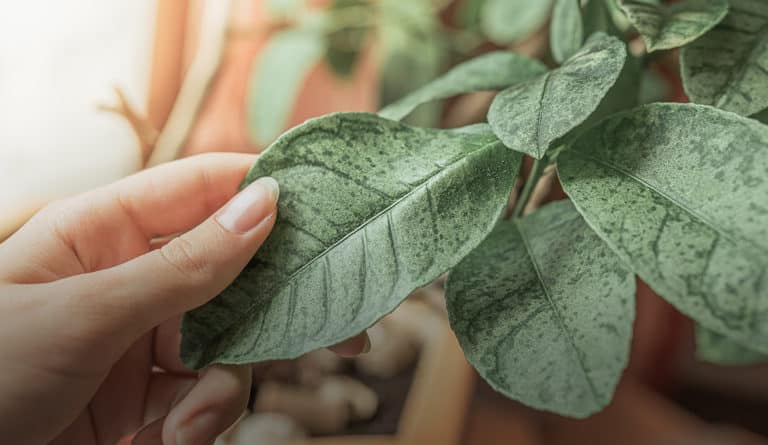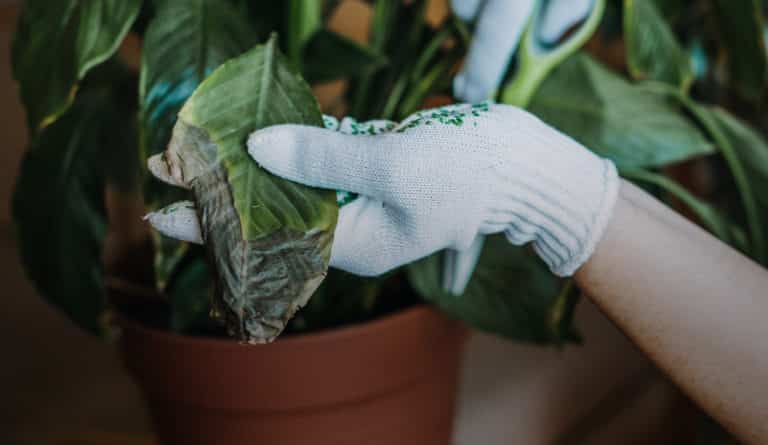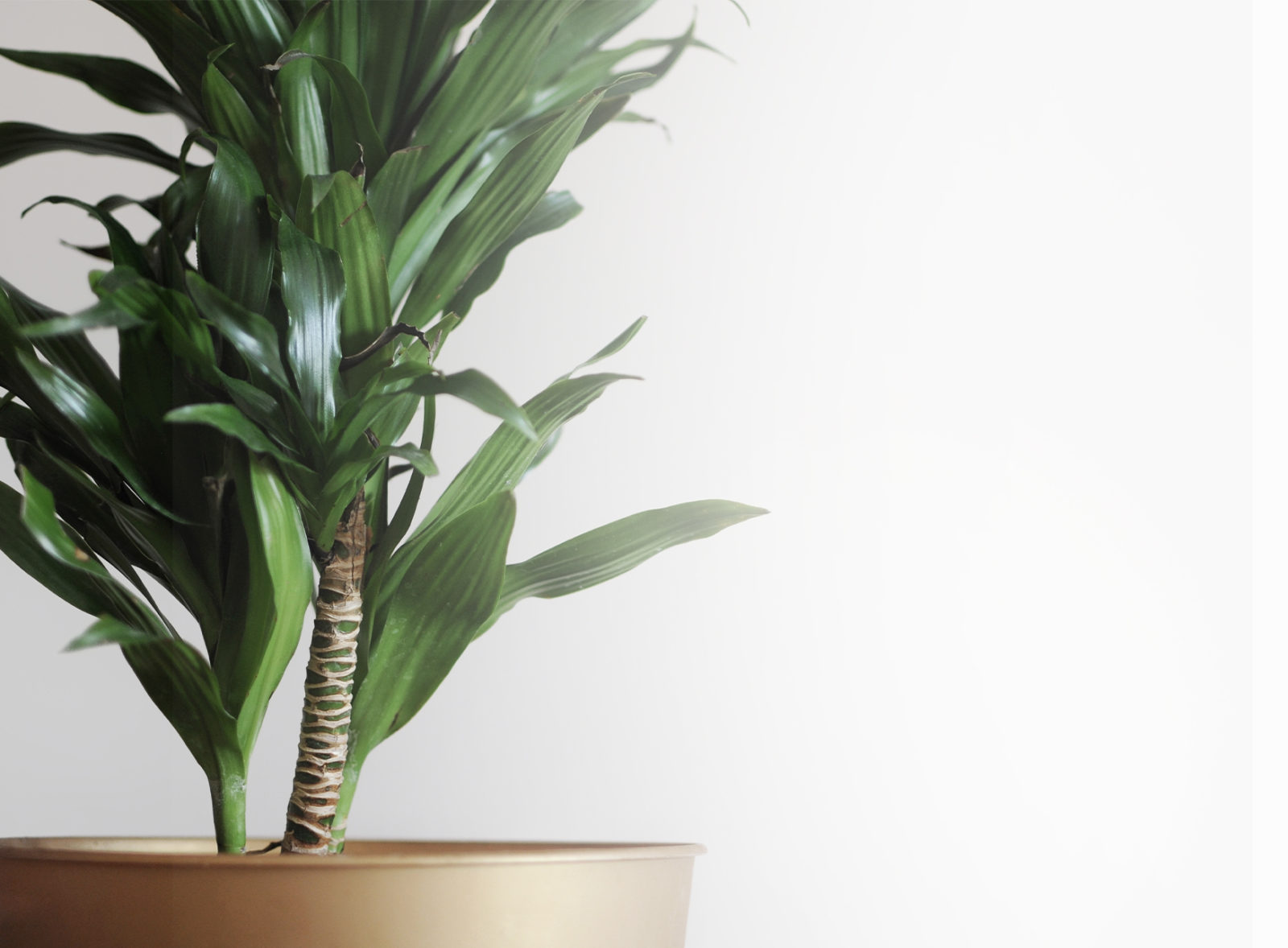
dracaena
aka dracaena marginata, dracena compacta, dragon tree
Some types are called “dragon trees”, but a better name might be giraffe trees! Their canes can grow over 6 feet. If you want a plant that goes floor-to-ceiling and is easy to care for, look no further. Description: Madagascar / Subtropical / indoor tree / mistaken for palm / Many varieties including snake plant
variations
Dracaena species vary so much, they can look like entirely different species. There’s distinct varieties of dragon tree, like (Dracaena marginate) and (Dracaena fragrans). Other popular varieties include Corn plant (Dracaena deremensis) and Cornstalk (Dracaena fragrans).
light
no direct light, please
Medium to bright indirect light is best. This plant can also tolerate low light rooms. Choose East or West facing windows when possible.
water + feeding
irregular watering is okay
Allow soil to get half dry before watering and don’t overwater, especially in winter, when the soil should not get wet. This hungry fella likes monthly feedings Spring to Fall.
toxic
toxic to humans and pets
Ingestion can cause mouth, stomach irritation and vomiting. If your pets like to munch leaves, keep this out of reach.
location
adaptable
Handles average indoor temperatures, but doesn’t like sudden temperature changes, including cold drafts or blasts from heat vents.
humidity
loves a little extra
It’s a tropical plant so humidity is welcome.
size
tall
Can grow to more than 6 to 8 feet indoors.
pro tip
low light controls the height
This plant grows steadily in bright, indirect light. Once you’ve reached your desired height, transfer to a darker corner of your house. It will survive just fine, but not grow.
fun fact
cousin to asparagus
You would never guess by looking, but Dracaena is part of the aspragaceae family. Just remember, Dracaena is poisonous when ingested!
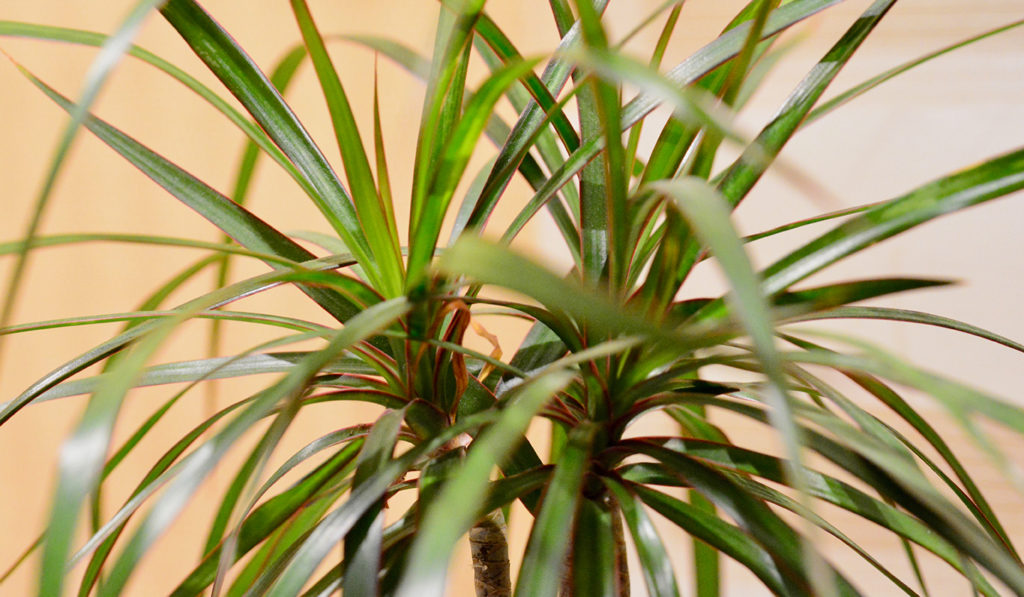
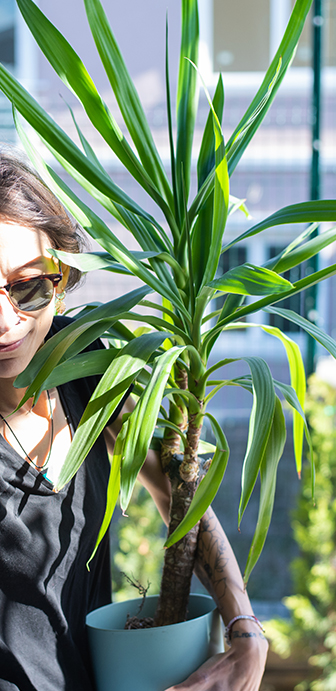
beyond the basics
-
soil & potting
This plant likes a light, well-draining soil like Miracle-Gro Cactus, Palm and Succulent Potting Mix. Or add some potting sand or perlite to regular potting soil. A layer of sand on the top will also help prevent rot. You pot must have good drainage and don’t let Dracaena sit in water. If you see water collecting in the drainage tray, dump it.
-
when to repot
Every 2-3 years in the Spring, especially in the earlier years. Increase the pot size by 2 inches each repotting. When your Dracaena is all grown up, you can get away with just replacing the top few inches of soil.
-
propagation
Cut a stem off the plant, and remove the lower leaves. Put the cutting in water to stimulate root growth. Then cut a 2 to 4 inch stub off the bottom of a stem and insert it halfway into a dry potting mix like Miracle-Gro Cactus, Palm and Succulent Potting Mix.
-
pest control
Most common pests are scale insects and mealybugs. Check under leaves when you’re dusting. See our Pest control section in Plant 101 for how to identify and deal with pests on your plant!
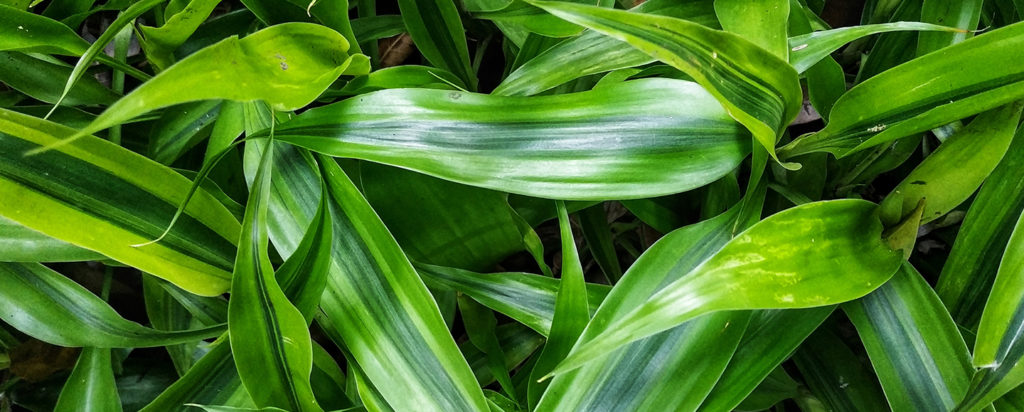
troubleshooting
-
brown tips on leaves?
Not enough water, or dry air. Most common in winter when furnaces are running.
Check soil more often and water when mostly dry. Add a humidifier to the room. Mist regularly. Put the pot on a pebble-filled tray of water. Consider moving to a room with more humidity like bathroom or kitchen.
-
yellowing leaves at the base?
Not really a problem! This is natural. That’s how Dracaenas grow. Older leaves fall off to allow for new ones. You can also gently pull off yellowed leaves. If new leaves are growing, everything is fine.
-
wilting leaves?
Overwatering or possible root rot. Wait until soil is medium dry between watering and ensure the pot has good drainage. If the wilt is bad, allow the soil to completely dry before watering. If the problem persists, check for root rot and remove any affected roots. Other moisture control techniques: Poke holes in soil to let oxygen at the roots. Put the pot (with drainage holes) in a tray lined with dry soil. Or go for a total do-over, and repot with a soil that’s formulated for drainage like Miracle-Gro Cactus, Palm and Succulent Potting Mix. For more information check out our Plant 101 section.
-
soft discoloured stems?
Overwatering causing root and stem rot. Cut back any soft, rotting stems. Remove your Dracaena from the pot and cut away any black, mushy roots. Get a sterilised new pot and start over. If the roots are all mush, you can still save your plant baby! Propagate from the top of the plant.
-
plant not growing?
Not enough light. Dracaena is cool hanging out in low light corners of your house, but it takes brighter (indirect) light to make it grow. This gives you the power to control the height of your plant! When you’re at the right height, move to a shadier spot.

dracaena
aka dracaena marginata, dracena compacta, dragon tree
Some types are called “dragon trees”, but a better name might be giraffe trees! Their canes can grow over 6 feet. If you want a plant that goes floor-to-ceiling and is easy to care for, look no further. Description: Madagascar / Subtropical / indoor tree / mistaken for palm / Many varieties including snake plant
variations
Dracaena species vary so much, they can look like entirely different species. There’s distinct varieties of dragon tree, like (Dracaena marginate) and (Dracaena fragrans). Other popular varieties include Corn plant (Dracaena deremensis) and Cornstalk (Dracaena fragrans).
light
no direct light, please
Medium to bright indirect light is best. This plant can also tolerate low light rooms. Choose East or West facing windows when possible.
water + feeding
irregular watering is okay
Allow soil to get half dry before watering and don’t overwater, especially in winter, when the soil should not get wet. This hungry fella likes monthly feedings Spring to Fall.
toxic
toxic to humans and pets
Ingestion can cause mouth, stomach irritation and vomiting. If your pets like to munch leaves, keep this out of reach.
location
adaptable
Handles average indoor temperatures, but doesn’t like sudden temperature changes, including cold drafts or blasts from heat vents.
humidity
loves a little extra
It’s a tropical plant so humidity is welcome.
size
tall
Can grow to more than 6 to 8 feet indoors.
pro tip
low light controls the height
This plant grows steadily in bright, indirect light. Once you’ve reached your desired height, transfer to a darker corner of your house. It will survive just fine, but not grow.
fun fact
cousin to asparagus
You would never guess by looking, but Dracaena is part of the aspragaceae family. Just remember, Dracaena is poisonous when ingested!
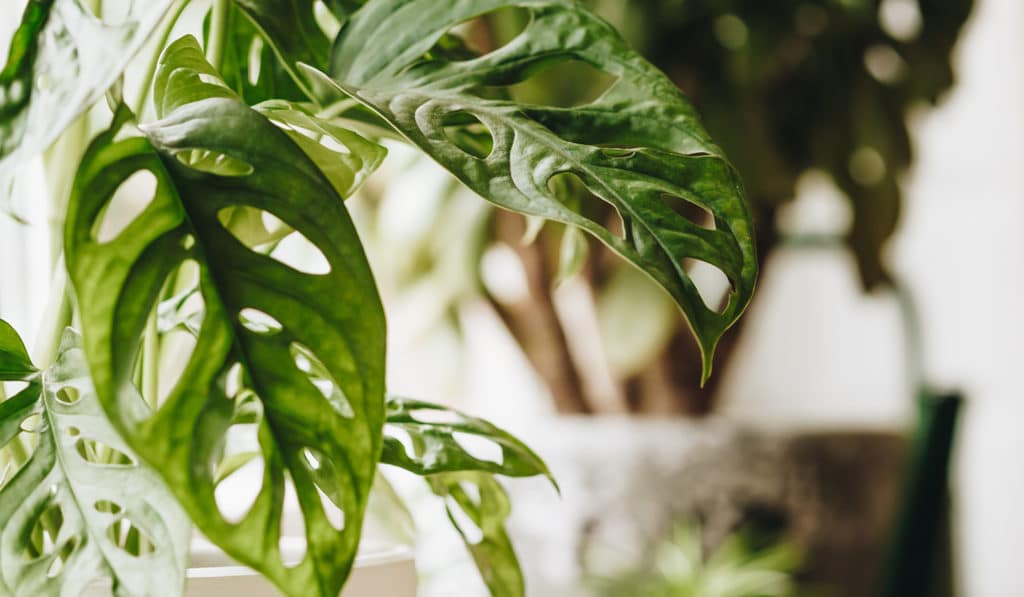
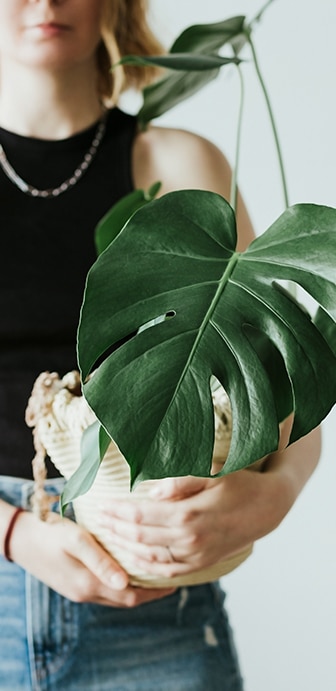
beyond the basics
-
soil & potting
Use a rich, well-draining, indoor potting soil, like Miracle-Gro® Indoor Potting Mix. Ensure your pot has good drainage. If you notice water pooling in the drainage tray, empty it.
-
when to repot
Monstera grows fast, filling the pot with roots, and can quickly become rootbound. Repot in the Spring every 1 to 2 years, especially with younger plants. Increase your pot by 2 inches. When your Monstera is more mature, you can get away with just replacing the top few inches of soil.
-
propagation
Monstera is easy to propagate, especially If you have a node or aerial roots. Make your cut just below the node , then remove the lower leaves. Place your cutting in a glass jar with water and roots will grow within a couple weeks. For more information on propagation check out our propagation project page!
-
pest control
The most common pest is mealybugs. Look under those leaves when doing your regular cleaning. Check out our Pest control section in Plant 101 for how to identify and deal with pests on your plant!
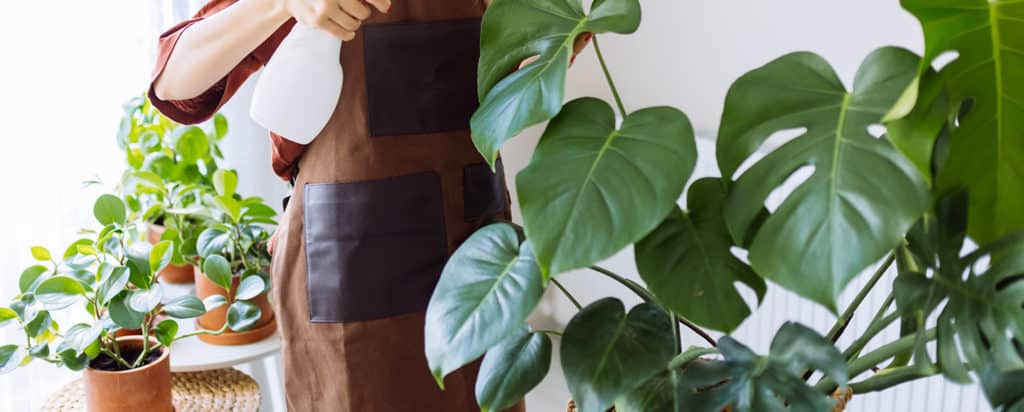
troubleshooting
-
yellow leaves?
You’re probably overwatering. Are the leaves are also wilting? It’s almost certainly too much water, but this problem is easy to solve if caught early. Let your Monstera dry out completely. Make sure your plant pot has a drainage hole to allow excess water to escape.
If you’ve caught it early you should be able to fix this rather easily. Try poking holes in soil to allow for oxygen to get to the roots, or place pot (with drainage holes) in a tray or container with dry soil. This will soak up excess moisture. Finally check for root rot, remove any roots that seem affected, you may want to repot with fresh dry soil. For more information check out our Plant 101 section.
-
leaf tips and edges turning brown?
Could be a variety of reasons. Dry air, dry potting mix, too low of temperatures, or outgrowing pot size. If the room this plant is in is over 75 F/24 C and the air feels dry try a humidifier or placing plant on a pebble filled try of water. Mist leaves regularly. If near a heat vent move it away. If the room is too cold, or near a cold window move somewhere warmer.
Check if roots are bound or sneaking out the bottom drainage hole. Repot if necessary.
-
plant ‘crying’?
Too much water. Monstera leaves can drip if their potting mix is too wet. Slow down on the watering. Make sure the top two inches of potting mix get fully dry between waterings.
-
no holes in the leaves?
Probably not a problem! Young plants don’t have them. But if you have a mature plant that’s stopped producing holes with leaves, something is wrong. Check your location, watering and feeding routine.
-
mold on the surface soil?
Overwatering, too little time between watering. Mold (and even mushrooms) growing on your soil is not a direct threat. But it IS a sign of overwatering. Root rot can follow if not addressed. Water less frequently and make sure you let the top two inches of soil fully dry before watering. Ensure you have proper drainage. If things look really moldy, you can remove the top inch or so of soil.
